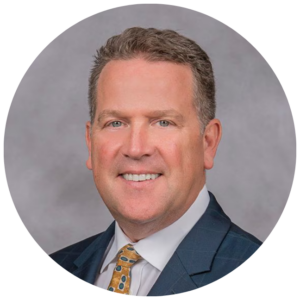Locums continues to outshine
Welcome to Locums Digest, Locumpedia’s free bi-weekly roundup of industry news and trends that helps locum tenens agencies and healthcare facilities make informed business decisions.
In this edition: The staffing industry has recently seen its fair share of turmoil in the post-COVID era. A whopping 640k temporary jobs have disappeared since the peak in March 2022, and overall revenue is down 10%. But not all segments are feeling the squeeze. While other sectors pull back, locum tenens is surging, with a 35% jump in revenue in the past three years. And as AI and automation move from buzzwords to boardroom strategies, industry leaders are cautiously optimistic about what comes next.
Also in Digest 91: Two locums agencies make “top companies” in America lists; Floyd Lee celebrates their Locum Tenens Provider of the Year; the AMA ramps up its anti-burnout campaign; and a real-world case study shows how one facility saved $758K by rethinking workforce logistics. Plus, NALTO welcomes new board leadership, and Access Capital outlines how to prep for your next agency funding partner.
Staffing Drops 640K Jobs, Signs of Growth Emerge
March 11 | Staffing Industry Analysts
 The staffing industry’s been through the ringer lately. Temporary jobs are down 640,000 since peaking at just over 3 million in March 2022. Add in economic jitters, new tech like AI, and rising competition from outside players, and it’s no wonder leaders are feeling both “excited” and “a bit terrified,” according to SIA Chief Analyst Barry Asin.
The staffing industry’s been through the ringer lately. Temporary jobs are down 640,000 since peaking at just over 3 million in March 2022. Add in economic jitters, new tech like AI, and rising competition from outside players, and it’s no wonder leaders are feeling both “excited” and “a bit terrified,” according to SIA Chief Analyst Barry Asin.
In 2024 alone, staffing revenue dropped 10%. Travel nurse staffing took the biggest hit, plunging 60% from 2022 levels. But not every corner of the industry is shrinking. Locum tenens revenue jumped 35%, and education staffing climbed 23%. SIA projects overall revenue will tick up 1% this year, with a return to growth across all segments, including healthcare staffing, by 2026.
The slowdown isn’t for lack of broader economic strength. US GDP and nonfarm employment are both up. But staffing firms are up against labor hoarding, uncertainty in key client industries, and pressure to evolve fast. AI agents are raising the bar, and today’s competition goes beyond other staffing firms to include IT consulting giants and the independent contractor workforce.
Policy changes could also shake things up. Tariffs, cuts to legal immigration, and federal spending reductions may hold back growth, even as pro-growth measures like tax breaks and deregulation offer some upside.
La Vida Locum
Advocacy in Action: Reducing Physician Burnout
March 12 | American Medical Association
Physician burnout isn’t new, but it exploded during the pandemic, with nearly 63% of doctors reporting symptoms by the end of 2021. That’s up from 38% in 2020. The AMA says it’s time to stop treating burnout as an individual issue and start addressing the system-wide dysfunctions that fuel it.
Burnout symptoms range from emotional exhaustion and depersonalization to a tanked sense of accomplishment. Every specialty is affected, and when burnout hits, it drains the provider and drags down productivity, morale, and patient care.
Instead of just raising awareness, the AMA is taking action. They’re leading the charge to eliminate outdated credentialing questions that discourage physicians from seeking help, modernizing licensure applications in 34 states and 521+ hospitals, and advocating for legislative protections. They’re also working to reauthorize the Dr. Lorna Breen Act, which funds mental health resources for frontline providers.
The goal is clear between these actions and others: create work environments that support physician well-being. Burnout isn’t a badge of honor. It’s a red flag, and the AMA is determined to pull the industry out of the flames.
Dr. Mira Mitry Named 2024 Provider of the Year by Locumpedia
March 25 | Floyd Lee Locums
 Floyd Lee Locums is celebrating internal medicine hospitalist Dr. Mira Mitry’s recognition as a 2024 Provider of the Year by Locumpedia. The award honors her dedication to culturally competent care and unwavering service to underserved communities through locum tenens work.
Floyd Lee Locums is celebrating internal medicine hospitalist Dr. Mira Mitry’s recognition as a 2024 Provider of the Year by Locumpedia. The award honors her dedication to culturally competent care and unwavering service to underserved communities through locum tenens work.
Fluent in English and Arabic, Dr. Mitry brings her skills wherever they’re needed most, from rural clinics to major metro hospitals. She’s recently completed assignments at Ochsner Medical Center, Slidell Memorial Hospital, and Miami Valley Hospital. At Slidell, she helped launch a new hospital medicine department; at Wayne Health in Michigan, she led the development of an inpatient hospitalist system and oversaw a team of 20 clinicians. Beyond the bedside, Dr. Mitry lends her expertise to hospital committees focused on utilization review, sepsis care, and residency selection. She also volunteers her time supporting immigrant families and educating underserved populations.
Dr. Mitry is the third Floyd Lee Locums physician to receive this honor, joining 2023 winner Dr. Ziad Skaff and 2022’s Dr. Aerial Avery. This recognition, along with recent accolades from Staffing Industry Analysts, reflects the organization’s ongoing commitment to excellence in locum tenens staffing.
Why Representation in Medicine Saves Lives
March 29 | KevinMD
A physician’s personal story from early-career locum work in rural Missouri illustrates what data has long confirmed: cultural competency and diversity in medicine aren’t just valuable but essential. In one case, a misdiagnosis of a scalp condition in a biracial child highlighted how cultural understanding, not just clinical training, can determine effective care.
The same physician also recalled a critical ER case in which bias nearly delayed life-saving treatment for a black woman with sickle cell disease. These moments speak to a more significant, well-documented trend: some patients routinely receive less aggressive pain treatment, and their symptoms are more likely to be dismissed or misattributed.
Research backs this up. Women wait longer in emergency departments for heart attack care, and black patients are consistently undertreated for pain. Studies have shown that outcomes improve when patients are treated by providers who share their racial or gender identity, but it goes beyond that. A representative workforce doesn’t just bring different perspectives; it leads to better outcomes.
Locum Leaders
Jackson Healthcare Recognized Among Top 100 Companies To Work For
April 2 | Jackson Healthcare
Jackson Healthcare has once again earned its spot on the 2025 Fortune 100 Best Companies to Work For list, marking back-to-back wins and reinforcing its reputation as a people-first powerhouse. The recognition comes courtesy of Great Place To Work, which surveys more than 1 million US employees yearly to assess workplace culture, trust, and satisfaction.
 A resounding 90% of participating associates rated the company as a great place to work. Even more impressive, the organization outpaced national benchmarks by 20% in categories like productivity, recruitment, retention, customer service, and agility.
A resounding 90% of participating associates rated the company as a great place to work. Even more impressive, the organization outpaced national benchmarks by 20% in categories like productivity, recruitment, retention, customer service, and agility.
President Shane Jackson credits the honor to the company’s 25-year commitment to its core values; clearly, that foundation is still holding strong.
All Star Healthcare Solutions Named a Top Workplace USA for 2025
March 20 | All Star Healthcare Solutions
Cue the confetti! All Star Healthcare Solutions has scored a 2025 Top Workplaces USA award in the 150–499 employee category. Sponsored by USA Today and powered by Energage, this recognition is based on anonymous feedback from the folks who know the company best: its employees.
 President and CEO Ken Bernstein called the honor “a true privilege,” giving credit where it’s due: the All Stars who fuel the company’s culture and success. Chief People Officer Shelby Thompson highlighted the team’s commitment to professional development and work-life balance as cornerstones of their inclusive, people-first workplace.
President and CEO Ken Bernstein called the honor “a true privilege,” giving credit where it’s due: the All Stars who fuel the company’s culture and success. Chief People Officer Shelby Thompson highlighted the team’s commitment to professional development and work-life balance as cornerstones of their inclusive, people-first workplace.
The Top Workplaces program evaluates organizations with 150 or more employees, recognizing top scorers in four size categories. All Star’s 2025 nod, announced March 20, proves that when culture comes first, the results speak for themselves.
Leslie Snavely Recognized as CEO of the Year 2025 by Utah Business
March 17 | Utah Business
 Leslie Snavely, CEO and President of CHG Healthcare, was recently recognized asone of Utah Business’s 2025 CEOs of the Year. Over her 14-year run, Snavely has kept CHG at the forefront of locum tenens staffing while championing innovation across the board.
Leslie Snavely, CEO and President of CHG Healthcare, was recently recognized asone of Utah Business’s 2025 CEOs of the Year. Over her 14-year run, Snavely has kept CHG at the forefront of locum tenens staffing while championing innovation across the board.
Her approach? Blend strong human connections with sharp, strategic tech to free up more time for providers to focus on what matters most: patient care. Under her leadership, CHG has not only become a standout workplace, offering perks like onsite health clinics and paid parental leave, but also saw 7% revenue growth in 2024 and launched Advisory Services by CHG. A vendor management system is set to follow in 2025.
As for what matters most to her? “The thing I am most proud of is the strong core values-based culture we have built at the company,” Snavely said. It’s a philosophy that’s paying off for her team, providers, and the patients they serve.
Hire Power
Smarter Workforce Management: From Staffing Cost Cuts to AI-Powered Precision
April 3 | AHSA Staffing and AI Journal
Two recent initiatives offer healthcare leaders a more straightforward path toward workforce stability, and both underscore the value of rethinking traditional staffing strategies.
In early 2024, a nonprofit psychiatric hospital in the Northeastern US partnered with AHSA to restructure its staffing model. By renegotiating traveler rates, introducing 48-hour contracts, and leveraging local talent through a mileage-based discount policy, the facility cut traveler placements by 55% and saved more than $758,000 in just six months. Streamlined housing logistics and stronger contract oversight helped reduce overtime costs and improve staff satisfaction.
 Meanwhile, Aya Healthcare’s Dr. Dani Bowie urges health systems to integrate AI. In her new book, Reimagine Workforce Management with AI, Bowie presents a practical roadmap for using artificial intelligence to fine-tune scheduling, enhance engagement, and contain labor costs. From flexible staffing models to predictive scheduling, the guide offers healthcare leaders tools to modernize workforce planning without sacrificing care quality.
Meanwhile, Aya Healthcare’s Dr. Dani Bowie urges health systems to integrate AI. In her new book, Reimagine Workforce Management with AI, Bowie presents a practical roadmap for using artificial intelligence to fine-tune scheduling, enhance engagement, and contain labor costs. From flexible staffing models to predictive scheduling, the guide offers healthcare leaders tools to modernize workforce planning without sacrificing care quality.
Together, these examples show that targeted, data-informed strategies, whether powered by tech or thoughtful partnerships, are reshaping how healthcare organizations manage their most critical asset: their people.
Why Every Healthcare Facility Needs a Staffing Back-Up Plan
March 19 | Medicus Healthcare Solutions
Staffing shortages are the worst kind of surprises. Whether it’s a sudden provider departure or an unexpected patient surge, healthcare facilities can’t rely on wishful thinking. That’s where staffing contingency plans come in.
Instead of scrambling when things go sideways, a solid contingency strategy lets hospitals keep care consistent, staff supported, and burnout at bay. Think of it as your clinical safety net, designed to:
- Prevent service disruptions with steady, reliable staffing
- Lighten the load for permanent teams
- Keep patient care rolling without a hiccup
 At the Becker’s CEO + CFO Roundtable, Medicus shared a real-world example: how MyMichigan Medical Center used a proactive staffing strategy to double its cardiac surgical volumes—yes, double. When contract negotiations with their outsourced anesthesia group stalled, President Chuck Sherwin had already teamed up with Medicus to create a backup plan. So when Plan A fizzled, Plan B launched without delay, and the OR didn’t miss a beat.
At the Becker’s CEO + CFO Roundtable, Medicus shared a real-world example: how MyMichigan Medical Center used a proactive staffing strategy to double its cardiac surgical volumes—yes, double. When contract negotiations with their outsourced anesthesia group stalled, President Chuck Sherwin had already teamed up with Medicus to create a backup plan. So when Plan A fizzled, Plan B launched without delay, and the OR didn’t miss a beat.
A contingency plan isn’t just about plugging holes. It’s a growth lever. And with the right partner, you’re future-proofing your workforce.
SmartRecruiters Report Reveals Key Healthcare Hiring Benchmarks for 2025
March 24 | SmartRecruiters
The latest SmartRecruiters 2025 Recruiting Benchmarks Report shines a spotlight on what healthcare hiring teams already know: it’s a different ballgame out there. Pulled from nearly 90 million applications for 1.5 million jobs across 95 countries, the report reveals how healthcare recruiting stacks up and where it’s getting smarter.
While the industry sees 45% fewer applications per role than the global average, those who apply are serious contenders. Healthcare candidates are 37% more likely to land interviews and 70% more likely to score offers. And even with fewer applicants, healthcare recruiters still make 25% more monthly hires than their cross-industry peers.
Hiring timelines hover around 41 days on average, slightly above the global median, but teams using AI shave that down by 11 days. Internal mobility is holding strong, driving 20% of new hires, but referrals remain rare at just 5%. The biggest hurdle? A tight labor market has pushed the offer acceptance rate down to 77%, the lowest across all industries in the report.
Still, smart solutions are making waves. Asbury Communities in the US cut its vacancy rate by 69% while dropping hiring time by a third. Bottom line: tech-powered strategies aren’t just helpful; they’re becoming essential in staying competitive.
How Staffing Companies Can Onboard New Funding Partners
March 13 | Access Capital
Access Capital’s new guide outlines how staffing companies can navigate the onboarding process when partnering with a new lender. Designed to help staffing firms set themselves up for success, the guide covers everything from vetting potential funding partners to executing the first transaction.
The first step is identifying the right funding partner. The guide recommends asking lenders about their experience with staffing firms, available financing types, contract terms, approval process, and additional services offered. Once a lender is selected, firms should prepare financial documents such as profit and loss statements, accounts receivable aging reports, client contracts, bank statements, and tax records.
During due diligence, lenders may perform credit and background checks, verify client payment terms, and conduct field exams to review receivables and internal processes. Finalizing the agreement requires careful review of terms, including advance rates, fees, termination clauses, and reporting obligations. After setup, firms can expect funding timelines under 24 hours and ongoing compliance requirements, such as monthly financial reports.
Making the Rounds
America’s Aging Population Faces Growing Shortage of Geriatric Care
March 9 | Business Insider
America is aging fast, and our healthcare system struggles to keep up. By 2050, more than 80 million Americans will be over 65. Yet, we’re staring down a serious shortfall in geriatrics, one of the most critical specialties for this group.
Only about 7,000 certified geriatricians are practicing in the US, and there is roughly one specialist for every 11,400 older adults. And we’re not adding enough new ones to the roster. Why? Lower salaries, limited exposure in medical school, and the complex nature of treating older patients with multiple chronic conditions have kept interest low among new physicians. Non-specialists are increasingly stepping in to fill the gap, which could affect the quality and consistency of care older Americans receive.
Fortunately, some progress is being made. Medical schools and professional organizations are pushing to integrate more geriatric training into core curricula. A few are even offering financial incentives to attract future doctors. But we won’t sugarcoat it: Meeting the needs of our aging population will take more than good intentions. It’ll require strategic, sustained efforts across every corner of healthcare.
Pandemic Linked to Lower Salaries and Fewer Rural Placements for New Physicians
March 12 | Medical Care
The COVID-19 pandemic may be in the rearview mirror, but its ripple effects are still shaping the future of medicine, especially for newly minted physicians. A fresh look at more than a decade’s worth of employment data from New York shows just how much the job hunt has changed for graduating residents and fellows.
From 2010 to 2022, researchers tracked the experiences of nearly 32,000 medical trainees. While more new doctors landed jobs during the pandemic(up by 2%), their confidence in the job market dropped sharply by 12%. Meanwhile, the average base pay for new physicians fell from $288,257 to $264,687 during the pandemic years, a $23,569 dip. And fewer reported receiving job-related perks or feeling satisfied with their compensation.
Perhaps most concerning, the number of new physicians entering rural practice shrank from 3% to just 1%. That’s a red flag for underserved communities already struggling to recruit and retain talent. Bottom line: the job market may still be open for business, but it’s not business as usual for new physicians.
Congress Grants Extension for Telehealth Waivers
March 20 | Health Leaders Media
The clock is ticking, and the healthcare industry’s shot at making pandemic-era telehealth flexibilities permanent just got a six-month extension. Thanks to a recent government funding bill, waivers for telehealth and Hospital at Home programs are safe until September 30, 2025. After that? No guarantees.
This isn’t just a reprieve; it’s a final audition. Advocates like the American Telemedicine Association have pushed for multi-year extensions, but Congress wants proof. Can these models save money? Improve outcomes? Scale across the board? Close to 400 hospitals are already on board with the Acute Hospital Care at Home model, yet red tape and reimbursement headaches are slowing others down. Mass General Brigham’s program lead put it bluntly: the current regulatory limbo is stifling growth, even as early research points to cost savings and better care.
Virtual care, which once spiked to cover 15% of all healthcare visits during the COVID-19 pandemic, still holds value for both patients and providers. However, if healthcare leaders want these waivers to stick around, they’ve got until the fall to deliver solid, scalable data. Congressional patience isn’t endless, and the window for permanent reform is starting to close.
Sponsored Content
NALTO Appoints New Board Member and Re-Elects Two Leaders for 2025–2028 Term
March 24 | NALTO
There’s a change of guard at NALTO, and it’s all about strengthening the locum tenens community. The National Association of Locum Tenens Organizations has named Anthony Szydlowski of All Star Healthcare Solutions to its Board of Directors, while also re-electing Karen Hayes of Hayes Locums and Mark Stinnett of Medstaff National Medical Staffing. These appointments reinforce NALTO’s mission to champion ethical leadership and long-term industry growth.
President Jarin Dana emphasized the board’s vital role in shaping best practices and pushing the industry forward. President-Elect Liz Hale echoed that sentiment, pointing to the board’s collective experience as a key asset for guiding the future of healthcare staffing.
NALTO also gave a well-earned nod to outgoing board member Matt Young, recognizing his seven years of service, including his work on the Healthcare Provider Shortage Minimization Act (HR 1160), which was reintroduced in February 2025. Though stepping down, Young isn’t stepping away; he’ll continue serving the industry through leadership roles at All Star Healthcare Solutions and YPO Palm Beach.









